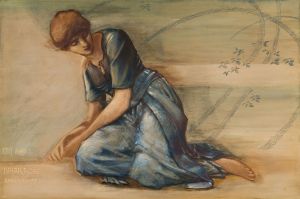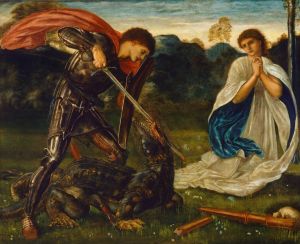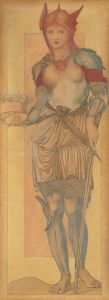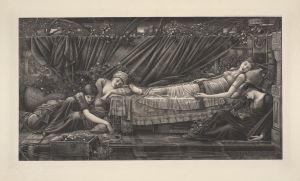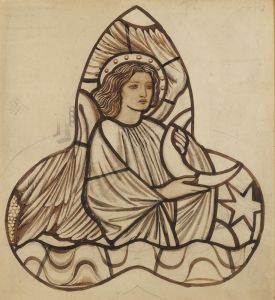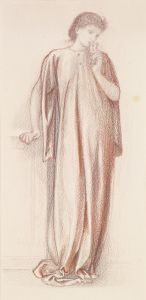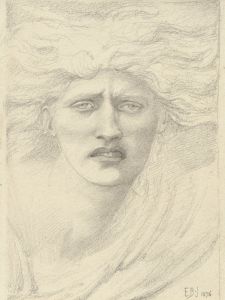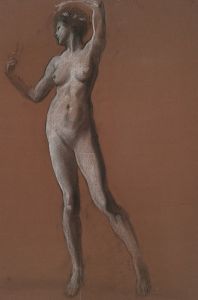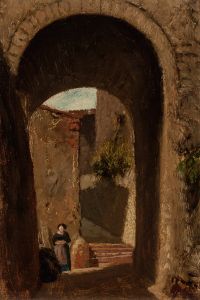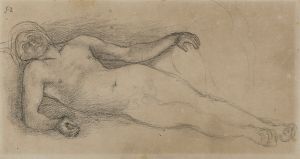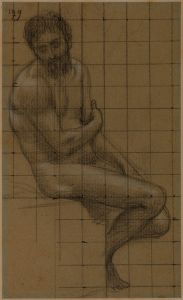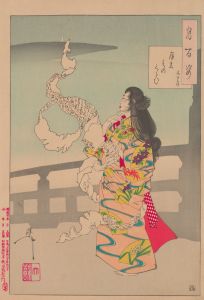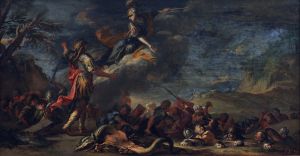
Golden Gate
A hand-painted replica of Sir Edward Coley Burne-Jones’s masterpiece Golden Gate, meticulously crafted by professional artists to capture the true essence of the original. Each piece is created with museum-quality canvas and rare mineral pigments, carefully painted by experienced artists with delicate brushstrokes and rich, layered colors to perfectly recreate the texture of the original artwork. Unlike machine-printed reproductions, this hand-painted version brings the painting to life, infused with the artist’s emotions and skill in every stroke. Whether for personal collection or home decoration, it instantly elevates the artistic atmosphere of any space.
Sir Edward Coley Burne-Jones (1833–1898) was a British artist and designer closely associated with the later phase of the Pre-Raphaelite movement. His work is characterized by its romanticism, intricate detail, and medieval-inspired themes. One of his notable works is "The Golden Gate," which is part of a series of paintings that reflect his fascination with mythological and biblical themes.
"The Golden Gate" is a painting that depicts a poignant moment from the apocryphal story of the Meeting at the Golden Gate. This narrative, which is not found in the canonical Bible but in the Protoevangelium of James, tells the story of the meeting of Joachim and Anne, the parents of the Virgin Mary, at the Golden Gate of Jerusalem. According to the story, after being visited by an angel who announces that they will have a child, Joachim and Anne meet at the Golden Gate and embrace, symbolizing hope and divine blessing.
Burne-Jones's interpretation of this moment is imbued with his characteristic style. The painting captures the emotional intensity of the reunion between Joachim and Anne. The figures are rendered with delicate, elongated forms, and their expressions convey a deep sense of reverence and joy. The use of rich, muted colors and intricate patterns in the background reflects Burne-Jones's interest in medieval art and his skill in creating a sense of timelessness and otherworldliness.
The composition of "The Golden Gate" is carefully balanced, with the central figures of Joachim and Anne forming a focal point that draws the viewer's eye. The architectural elements of the gate and the surrounding landscape are depicted with meticulous attention to detail, enhancing the narrative and providing a sense of place. Burne-Jones's use of light and shadow adds depth and dimension to the scene, creating a sense of intimacy and immediacy.
Burne-Jones was known for his collaborative work with other artists and craftsmen, particularly those associated with the Arts and Crafts Movement. His friendship with William Morris, a leading figure in the movement, influenced his approach to art and design. Burne-Jones's paintings often feature intricate patterns and decorative elements that reflect the principles of the Arts and Crafts Movement, which emphasized the importance of craftsmanship and the beauty of handmade objects.
"The Golden Gate" is a testament to Burne-Jones's ability to blend narrative and decorative elements in his work. The painting not only tells a story but also serves as a visual feast, with its rich textures, harmonious composition, and evocative use of color. It exemplifies Burne-Jones's skill in creating works that are both intellectually engaging and aesthetically pleasing.
In summary, "The Golden Gate" by Sir Edward Coley Burne-Jones is a significant work that reflects the artist's mastery of narrative painting and his deep engagement with medieval themes and aesthetics. Through its depiction of the meeting of Joachim and Anne, the painting conveys a sense of hope and divine intervention, rendered with the intricate detail and romanticism that characterize Burne-Jones's oeuvre.





